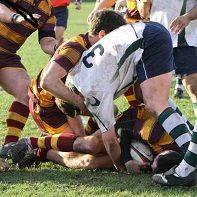Article
Elite Athletes May Not Have Better Eye Control After All
Author(s):
It may seem like elite athletes have a leg up on non-sports players when it comes to eye control, but research out of the University of Bradford in the United Kingdom says that’s not exactly the case.

It may seem like elite athletes have a leg up on non-sports players when it comes to eye control, but research out of the University of Bradford in the United Kingdom says that’s not exactly the case.
It may seem sensible to think that athletes have better reaction times than the general population. After all, hand-eye coordination is a paramount skill of most sports. However, the topic has remained debatable in the ophthalmology community. A new analysis aimed to uncover if faster reaction times in elite athletes were also associated with better eye movement control. The findings were presented by Brendan Barrett, PhD, BSc, at the 2016 Annual Meeting of the Association for Research in Vision and Ophthalmology (ARVO 2016) in Seattle, Washington.
The study included:
- 40 elite cricket players (24 male, 16 female; average age of 23)
- 21 elite rugby league players (all male; average of 23)
- 49 non-sporting controls (29 males, 20 females; average age of 22.5)
“Reaction times to the onset of a circular target (diameter 0.8°) was recorded via a button-press in 90 trials,” the authors explained. “There was equal probability of the target appearing centrally, or 7.5° to the left or right of centre.”
The participants were asked to maintain central fixation and their eye movements were recorded at 250Hz. Potential differences were taken into account based on gender.
For male controls, the baseline reaction times were 282ms (SE: 7ms). Cricket players had faster reaction times with 19ms and rugby players did not show a significantly faster outcomes with 17ms. For female controls, the baseline reaction times were 314ms (SE: 11ms) and cricket players were much faster with 66ms. The researchers warned, however, that it’s unclear if the faster reaction times are credited to the sports.
In addition, saccades were observed in about 20% of trials in males without a notable different between groups. Saccades occurred in 15% of female cricket players and 36% of female controls. Although saccades can increase reaction times, the team said that this cannot be applied to their research.
“We conclude that faster reaction times in fast-ball elites are not linked to better eye movement control, so training to keep the eyes still is unlikely to lead to any meaningful quickening of reaction times,” the authors confirmed.




